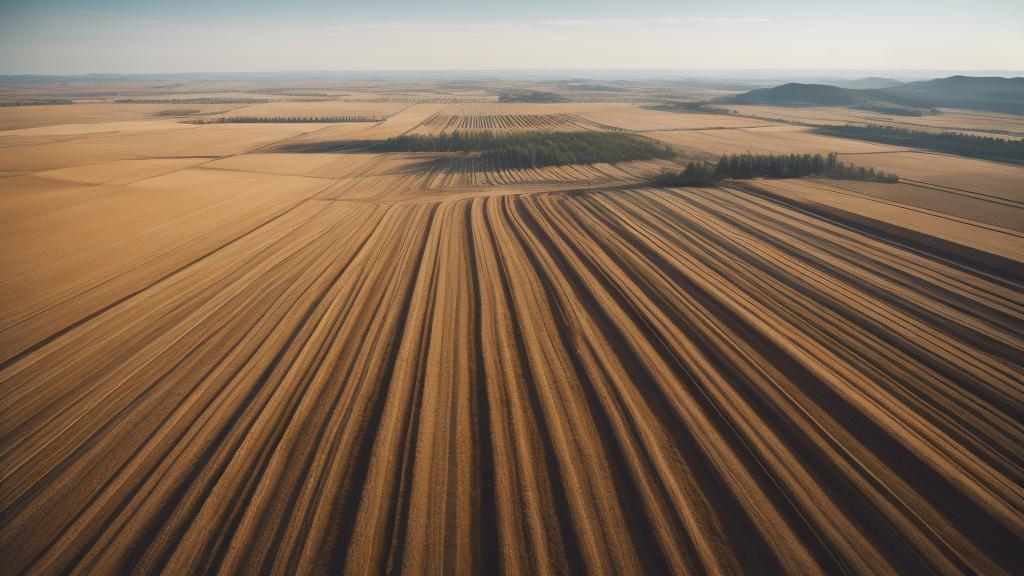In the heart of the United States, far from the bustling urban centers, a quiet revolution is taking place. While megacities garner attention with their sprawling solar farms and gleaming wind turbines, it's in rural America where a profound shift is happening—a shift towards renewable energy that promises to redefine these regions for generations.
Once dominated by coal and natural gas, rural communities are now recognizing the environmental and economic benefits of transitioning to renewable energy sources. This change isn't just driven by government mandates or corporate interests; it's a grassroots movement driven by farmers, local businesses, and townspeople eager to secure a sustainable future.
**The economic incentive**
For many rural areas, the shift to renewable energy is as much about economic survival as it is about environmental responsibility. Traditional industries like farming have been hit hard by climate change, with unpredictable weather patterns wreaking havoc on crops. Meanwhile, the coal industry, once a staple economy for many rural communities, has been in decline.
Renewable energy presents a lucrative opportunity for these communities. Wind and solar farms not only provide a steady income for landowners through lease agreements but also create jobs during the installation phase and maintenance. Furthermore, the influx of workers and their families revitalizes local businesses, schools, and housing markets.
**Overcoming skepticism**
Despite the financial benefits, the transition to renewable energy hasn't been without its challenges. Many rural residents initially viewed such projects with skepticism. Concerns over land use, the impact on the landscape, and noise from wind turbines were rampant. However, as communities witnessed firsthand the positive economic impacts and minimal environmental footprint of renewable projects, acceptance grew.
Educators and local leaders have played pivotal roles in dispelling myths and providing credible information about renewable energy. Community workshops, school programs, and tours of existing renewable installations have gradually shifted public opinion.
**A cultural shift**
Interestingly, the embrace of renewable energy is prompting a cultural shift in these areas. As locals become more aware of their environmental impact, there's a growing interest in sustainability on a broader scale. Farmers are exploring regenerative farming techniques, towns are investing in energy-efficient infrastructure, and schools are incorporating sustainability into their curriculums.
This shift is also reflected in local politics. Candidates running for local office are increasingly prioritizing clean energy initiatives, recognizing their importance to constituents. State and federal support further catalyzes these efforts, offering grants and technical assistance to those looking to embrace renewable solutions.
**Stories of success**
Rural America's journey towards renewable energy is peppered with inspiring success stories. In Kansas, a former coal miner's land now hosts a wind farm that produces energy for thousands of homes. Meanwhile, a dairy farm in New York has transitioned to operating completely off-grid, utilizing solar panels and bio-digestion.
These initiatives have not only garnered media attention but have also fostered a sense of pride and community among locals. They stand as testaments to what can be achieved when economics and environmental stewardship dovetail.
**The road ahead**
Looking to the future, there's optimism and ambition. As technology continues to advance, the cost of renewable installations is expected to fall further, making them even more accessible. Storage solutions are becoming more efficient, solving the intermittency problem that has long plagued renewables.
However, challenges remain. Grid integration, funding, and policy support are crucial to sustaining the momentum gathered so far. But if the past few years are any indication, rural America is up for the challenge, driven by a deep-seated determination to carve a sustainable future for themselves and generations to come.
**Conclusion**
The renewable energy transformation in rural America is more than just a trend; it's a testament to the resilience and adaptability of these communities. It highlights a shift towards greater environmental responsibility, economic stability, and community rejuvenation—a beacon of hope that other regions, both nationally and globally, are beginning to take notice of.
As the landscape of rural America continues to evolve, so too does its narrative, one that's increasingly driven by clean, sustainable energy sources. For these communities, the future is not only green but also brighter than ever.
The quiet revolution: How rural America is embracing renewable energy

